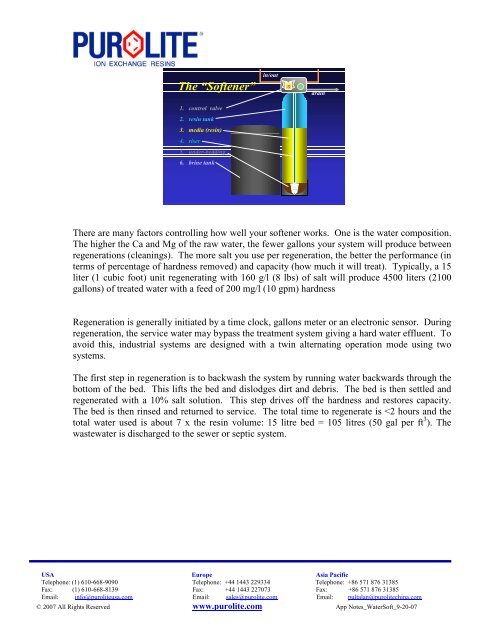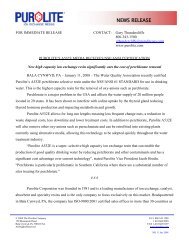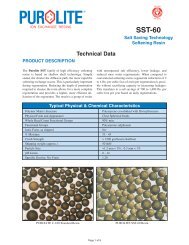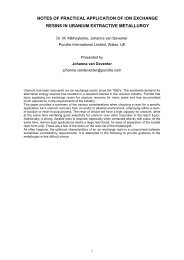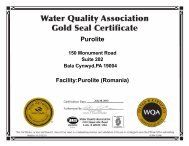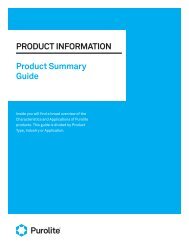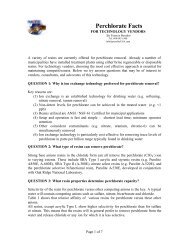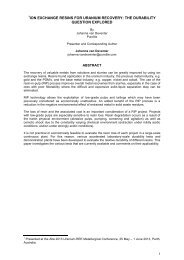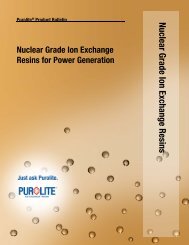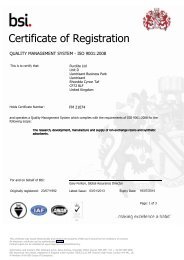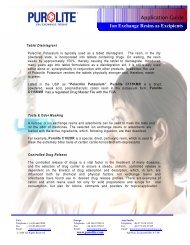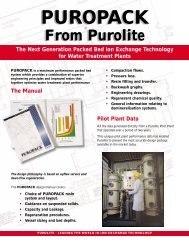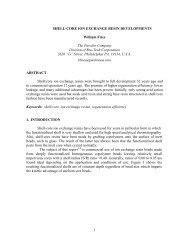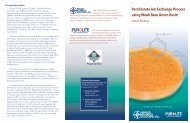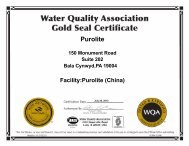Purolite Water Softening Resin Guide By: Chubb Michaud Water ...
Purolite Water Softening Resin Guide By: Chubb Michaud Water ...
Purolite Water Softening Resin Guide By: Chubb Michaud Water ...
You also want an ePaper? Increase the reach of your titles
YUMPU automatically turns print PDFs into web optimized ePapers that Google loves.
The “Softener”in/outSdrain1. control valve2. resin tank3. media (resin)4. riser5. under-bedding6. brine tankThere are many factors controlling how well your softener works. One is the water composition.The higher the Ca and Mg of the raw water, the fewer gallons your system will produce betweenregenerations (cleanings). The more salt you use per regeneration, the better the performance (interms of percentage of hardness removed) and capacity (how much it will treat). Typically, a 15liter (1 cubic foot) unit regenerating with 160 g/l (8 lbs) of salt will produce 4500 liters (2100gallons) of treated water with a feed of 200 mg/l (10 gpm) hardnessRegeneration is generally initiated by a time clock, gallons meter or an electronic sensor. Duringregeneration, the service water may bypass the treatment system giving a hard water effluent. Toavoid this, industrial systems are designed with a twin alternating operation mode using twosystems.The first step in regeneration is to backwash the system by running water backwards through thebottom of the bed. This lifts the bed and dislodges dirt and debris. The bed is then settled andregenerated with a 10% salt solution. This step drives off the hardness and restores capacity.The bed is then rinsed and returned to service. The total time to regenerate is


